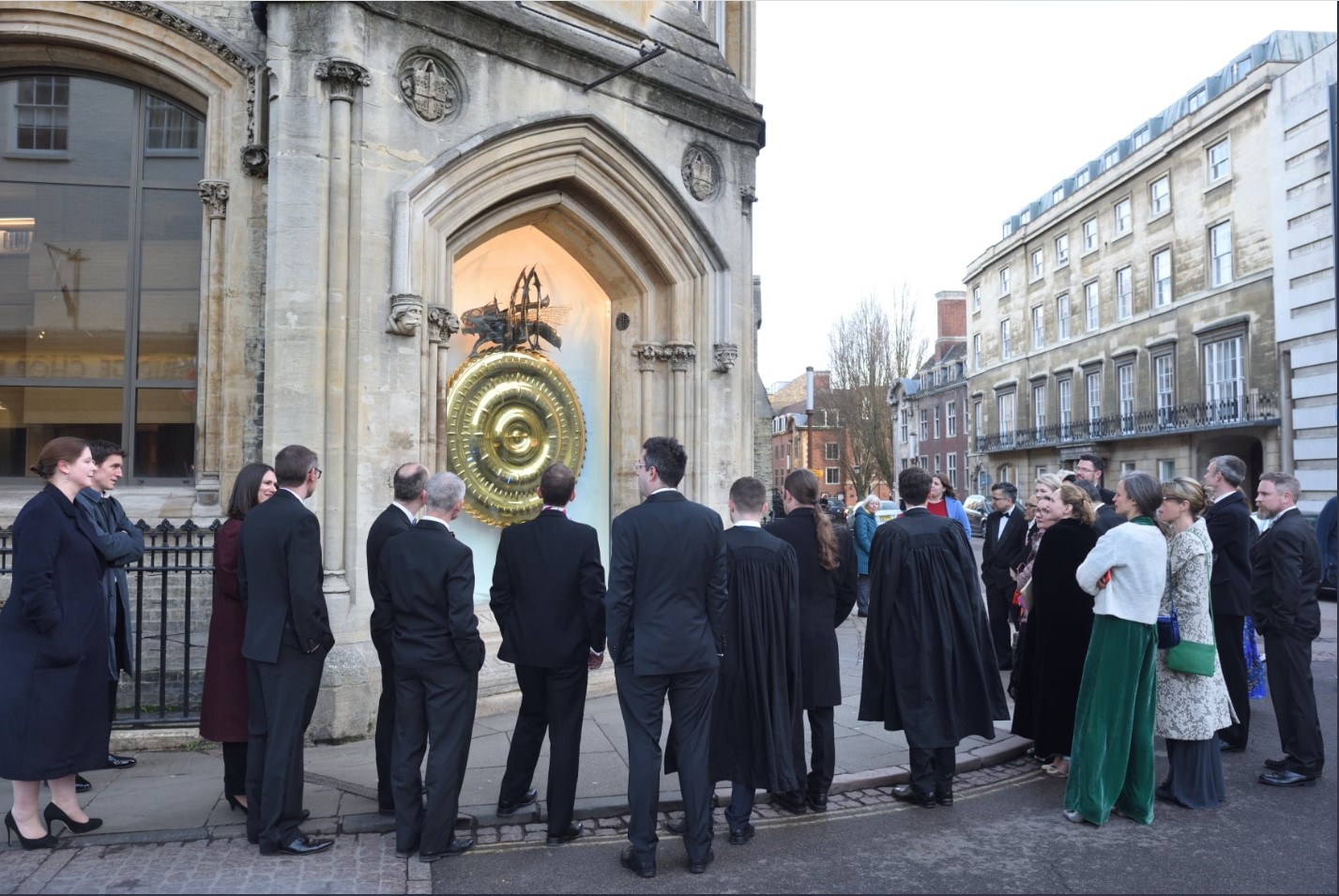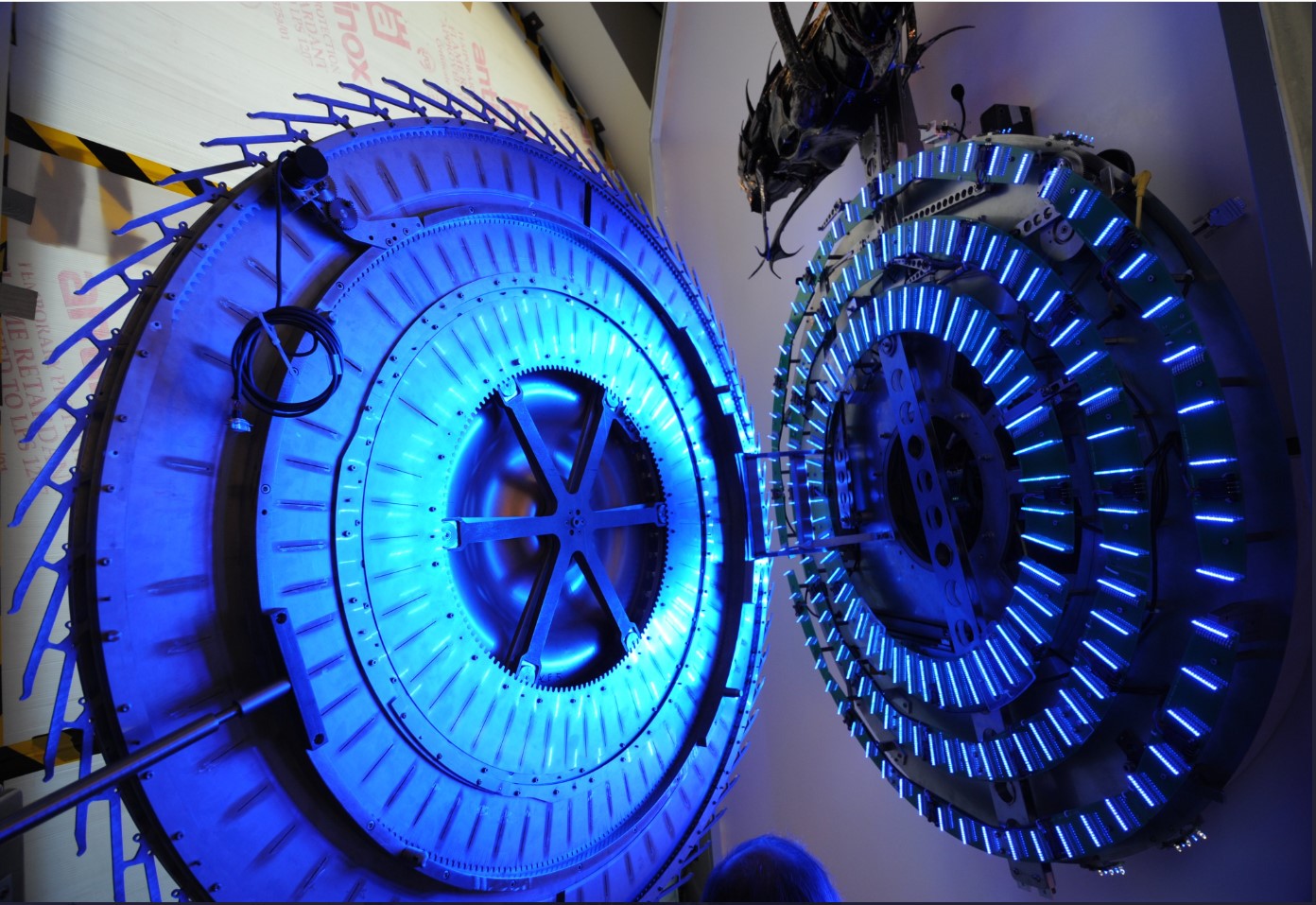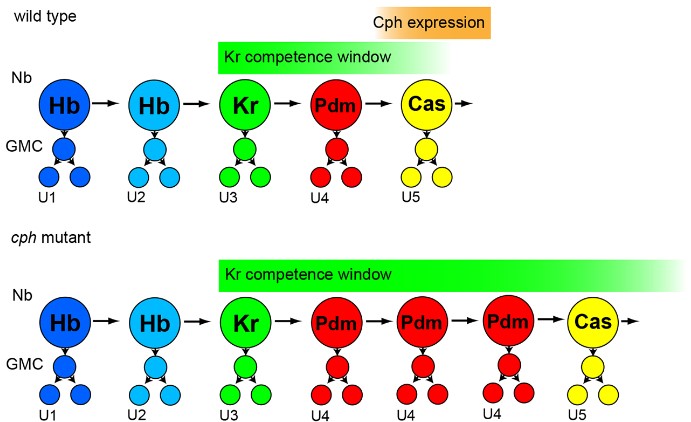Eating time with Ewan St. John Smith
Posted by the Node, on 2 December 2022
We loved Ewan St. John Smith’s tweet about the Chronophage clock that can be found in our home city, Cambridge. With Ewan’s permission, we have reproduced most of the thread celebrating the birthday of the clock’s inventor, Dr John C Taylor OBE, but you can also find the tweetorial on Twitter.
Today (25 November) marks a special day in the annual rhythm of the Corpus Chronophage Clock.
I (Ewan St. John Smith) am a Fellow in Pharmacology at Corpus Christi College, Cambridge, teaching medicine & biology, but I am also the Custodian of the Corpus Chronophage Clock. One of my jobs is to give tours of the Clock on College feast day but, today there is a need for a virtual tour.

The Clock sits on what used to be the entrance to a Natwest Bank, a building built in 1866 (architect Horace Francis) that originally housed the London County Bank. Natwest’s lease ended in 2005. The College needed better library provision for students. The then library was situated under the Parker Library and moving students out meant better facilities for students/researchers to access the Parker. However, the old entrance to Natwest couldn’t just be bricked up due to planning restrictions. What to do? That’s where inventor & alumnus Dr John C Taylor OBE comes in. Inventor of the bimetallic thermostat control present in electric kettles (http://johnctaylor.com), John is also an horologist & designed the Corpus Chronophage Clock that was built by Huxley Bertram.
But this is no ordinary clock. The escapement wheel is made from a single sheet of steel, plated in gold, created by a series of explosions in a vacuum, the radiating ripples that this has created allude to the Big Bang & the clock was inaugurated in 2008 by Stephen Hawking. Atop the wheel sits the Chronophage (time eater). It is an example of the grasshopper escapement mechanism invented by John Harrison in the 1700s. The Chronophage’s mouth opens at 30 sec past each minute, snapping shut when the minute is over: time passes & we all die.
When the hour is struck, there is no chiming of bells, but rather the rustling of chains & a hammer strikes a wooden coffin to sound out the passing of another hour – perhaps a little off putting for those studying in the library behind the clock! To tell the time, there are 3 LED wheels (2736 LEDs) to show seconds, minutes & hours, but this clock can play tricks…

Because our perception of time is always altered by what is going on & the clock’s trickery adds to that. In this video the clock is behaving…
But here the clock is playing tricks, watch the pendulum in this video! The clock has 50 tricks, a special set is reserved for 4 special days: John Harrison’s birthday (March 24th), John Taylor’s birthday (Nov. 25th – today 🥳), New Year’s Day & Corpus Christi Day.
When playing these tricks, the clock gets a little out of time, but have no fear, it can run 10% fast & 90% slow, thus enabling a rapid realignment. This ability also enables the clock to cope with the clocks going forwards/backwards. (For fun, here are more tricks!)
The pendulum has an inscription. Joh = Johannes = John; Sarto = Taylor, Monan = Monanensis = Isle of Man, Inv. = Invenit = to create, MMVIII = 2008: John Taylor from the Isle of Man made this in 2008. There are 10 peaks on the rhodium dish at the bottom that can be pointed at by the pendulum when playing certain tricks, a further homage to John Harrison and the accuracy achieved with his clocks centuries ago!
And of course, like all good clocks, there is a key, but this one is purely ceremonial. When spun, the key tells you to which clock it belongs & top left is the image of the bimetallic thermostat for the kettle!
The Chronophage has proved inspirational, perhaps most recently in research from Andrea Brand’s lab where they identified a temporal transcription factor in Drosophila that they named Chronophage in view of its role in regulating neurogenesis

So, that’s a little overview of what is truly an incredible thing, slap bang in the middle of Cambridge for everyone to see with plenty more secrets to share, all of which are courtesy of the man whose birthday it is today, Dr John C Taylor OBE.
– happy birthday John!


 (No Ratings Yet)
(No Ratings Yet)